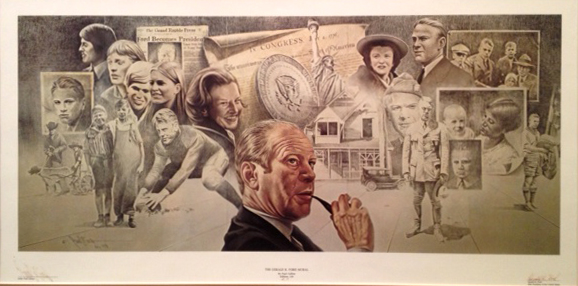Intro To Digital Photography
Professor Hoeksema
Daniel Spangler
Museum Visit Reflection on Peter van de Velde’s Calm Harbor
This
is a fantastic piece of several ships docking in a harbor. It is a sunny day
which can be inferred from the reflection and shading of the clouds and the way
that the shadows from the boats fall in defined lines across the water. The
ships are all from an era of wood and sails and speak proudly of their country
of origin through a brightly colored livery flying from the tops of their tall
masts.
The
painting has a very warm temperature to it, with the majority of the whites
leaning towards the deep orange glow of a late day sun. This is one of the
elements that drew me to the piece as it does have a subtle warmth to it. The
flags and sail are not taught which means that it is a calm day and the wind is
not picking up anything more than a gentle breeze. The clouds are present, but
not foreboding, instead giving a soft blanket that sits over the serenity
below.
The
water is a placid sea making for quick and clear reflections of the objects
floating on its surface. It is an oil on canvas painting, which, to my eye,
yields a greater amount of texture to the piece, both as a result of the
viscosity of the paints as compared to some others and the texture of the
canvas itself.
This
painting has a feeling of being “home for a time”. These boats have found a
place where they can rest for a time and restock all they need, but are always
keeping in mind, the journey ahead. However, in the moment, they are a taking a
time to be at peace. This speaks to my life quite lucidly at the moment. I feel
like I am in the final push for the harbor and a brief moment of rest before
the next stage of my life begins and I must weather the storms that that
journey brings.
It
is mostly for this reason that I really like this piece. It connects with me
through its use of warmer colors and metaphors that apply in my situation even
if they were not originally intended as those specifically by the original artist.
I think it is a fantastic painting and is worthy to be in any art gallery.
Attached is a picture from the art
gallery’s archives for reference purposes.







































